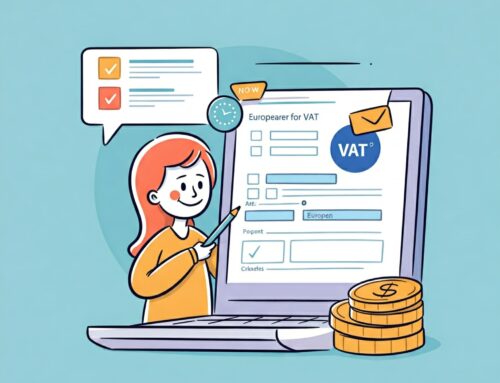This article has been written after the the substantial change in VAT regulation of July 2021.
Welcome to our latest article on Consumer Taxes: Discover the lowest VAT countries in Europe. VAT, or value added tax, is a tax on the consumption of goods and services and is a crucial source of income for many countries. In this article, we will explore the different types of VAT in Europe, focusing specifically on the countries with the lowest rates. We will also compare Spain’s VAT rates with those of other European countries and discuss proposals to reduce tax rates in Spain. Accompany us to immerse ourselves in the world of goods and services and to discover the countries with the lowest VAT rates in Europe.
What is VAT?
Taxes on consumption are usually applied to the production and distribution of goods and services, and one of the most widespread taxes is the Value Added Tax (VAT). This kind of tax exists in more than 160 countries around the world, including all Member States of the European Union. VAT is usually calculated as a percentage of the price of goods or services sold, and the rate varies from place to place. In Europe, rates vary from 16% in Luxembourg to 27% in Hungary, while the standard rate in Spain is 21%. There are also reduced rates of 10 For consumers, VAT is usually included in the price of goods and services, so it can be hard to know how many taxes are paid. However, companies must keep a detailed record of all their VAT transactions and report regularly to the tax authorities. Failure to comply with VAT rules can lead to penalties and fines. You can dive into VAT rules in VAT in Europe: regulations and requirements.
The UK has a VAT system similar to that of other European Union countries. The standard VAT rate in the UK is currently 20%, but there are also reduced rates of 5% for certain goods and services. Companies in the UK must be in charge of collecting and forwarding VAT to the Treasury. This also applies to the UK, which left the EU recently.
VAT rates in Europe
When it comes to taxation on goods and services in different places, there are substantial variations in rates. For example, some nations may impose a standard levy of 20% or more, while other countries may have a reduced rate of just 5%. These disparities can have a great influence on both buyers and businesses, as they can alter the rates of goods and services. For example, in Spain the standard rate is 21%, while the reduced rate is 10%. In contrast, some nations in Europe have a much lower standard rate than Spain, such as Luxembourg, with 17%. Knowing the VAT rates of different countries is important for companies that carry out cross-border activities, as it can determine their pricing strategies and their economic benefits.
It is also essential to be aware that some countries in Europe have various levels of taxation that apply to various articles and services. For example, in Italy there are four different VAT rates: 22%, 10%, 5% and 4%. Complete vat rates tables in Europe. The higher rate applies to most goods and services, while the reduced rates apply to items such as groceries, books, and medications. Portugal, for its part, has a unique rate of 23%, which is one of the largest in Europe. Knowing the different types of VAT in Europe can be complicated, but it is necessary for companies that want to operate effectively in the region.
Countries with the lowest VAT in Europe
When it comes to tax rates in the European Union, some countries stand out for having lower taxes than those applied in Spain. For example, Luxembourg has a reduced rate of 3 for some products and services, while in Malta it is 5%. In addition, other countries such as Cyprus, Greece and Portugal have lower rates below the Spanish standard rate of 21%. It should be noted that these lower rates are often applied to basic necessities such as food, medicines and publications, rather than luxury goods.
In order to identify the countries with the lowest tax rates in the European Union, it is essential to take into account the different types of charges applied. While some countries have a lower standard rate than in Spain, others have applied reduced rates for certain goods or services. It is worth noting that tax rates can vary significantly from country to country, as some standard rates as high as 27% (like Hungary) or as low as 16% (like Luxembourg). When the different tax rates of the EU are known, it is better to understand how the different countries approach tax on consumption and how they compare with Spain.
For more questions on VAT for online selling in EU, ask our Free Online Vat Consultant.
Comparison of Spain’s VAT rates with those of other European countries
As far as taxation is concerned, Spain is known to have some of the highest rates on the continent. However, certain products and services, such as food, books and medicines, are subject to a reduced rate of 10%, reduced VAT. Comparing Spain with other countries in Europe can provide an interesting point of view on the different approaches to taxation.
Hungary and Sweden have a normal rate of over 21% in Spain, while Luxembourg and Malta have a lower rate of 17% and 18% respectively. In addition, most European countries offer reduced VAT rates for certain goods and services, similar to those in Spain. One of the reasons why Spain’s rates are so high is the large amount of deductions that companies can benefit from, which makes the system more complex than that of countries such as Denmark and Sweden, with simpler tax rules.
In general, account must be taken of the context of VAT rates in Spain. Reduced VAT helps to ease the burden on consumers, and deductions are beneficial for businesses in certain cases. Each nation must determine what works best for its economy, but comparison with other European countries can help to understand it.
Tax rates in the Netherlands
The Netherlands is famous for its tax system, and it is essential to understand how it works. This country applies a progressive tax system, which means that the more you earn, the more taxes you pay. In addition, the rate of value added tax (VAT) is 21%, higher than in many other European Union nations. However, there is a reduced VAT rate of 9 for certain products and services, such as food, books and public transport. A curious aspect of the Dutch tax system is that there is a system of tax relief for low incomes. This implies that people who earn less than a certain amount can opt for tax credits, which can help offset the amount of tax they must pay. In addition, the Netherlands has a tax convention with many other countries, which can help reduce the amount of tax that individuals and organizations must pay when working abroad.
Despite the comparatively high tax rates in the Netherlands, the country is still regarded as one of the richest in the world. This is partly due to the strong social welfare system which is partly financed by taxes. In addition, the Netherlands has a very ready workforce and hosts several multinational companies. In conclusion, although the tax rates in the Netherlands may be higher than in some other EU countries, the advantages of living and working there more than make up for it.
Proposals to reduce tax rates in Spain
To lighten the tax burden, there have been several suggestions to overhaul the tax system in Spain, which has one of the highest tax rates across the continent. One of the proposals is the removal of some of the deductions that can currently be accessed. This could lead to a simpler method of taxation and a decrease in total taxation for many.
Another proposed measure is to reduce the normal tax rate in Spain. This would bring the country closer to the other countries of Europe, most of which have lower rates. A decrease in the tax rate could also encourage economic growth by increasing consumer spending.
Experts have argued that Spain could emerge by winning with the introduction of a two-tier tax system, similar to that of other European nations. With this system, certain goods and services would be subject to a reduced rate of taxation, while the rest would remain subject to the standard rate. This could help reduce the tax burden on crucial goods and services, while leaving revenue for the government. Ultimately, any proposal to reduce tax rates in Spain should be carefully examined in the context of the economic and political environment of the nation, as well as the broader trends concerning the VAT.
Conclusion
In conclusion, knowing the VAT rates of the various countries of Europe can be a valuable tool for both individuals and businesses. From discovering the countries with the lowest VAT rates to comparing the Spanish rates with those of other European countries, to exploring the tax rates in the Netherlands and the proposals to reduce rates in Spain, there is much to learn about this important aspect of taxation. Delving into the nuances of VAT countries, individuals and businesses can make informed decisions about their financial planning and strategies. Whether you own a small business or a global corporation, spending time to understand VAT rates can make a significant difference in your income account.





